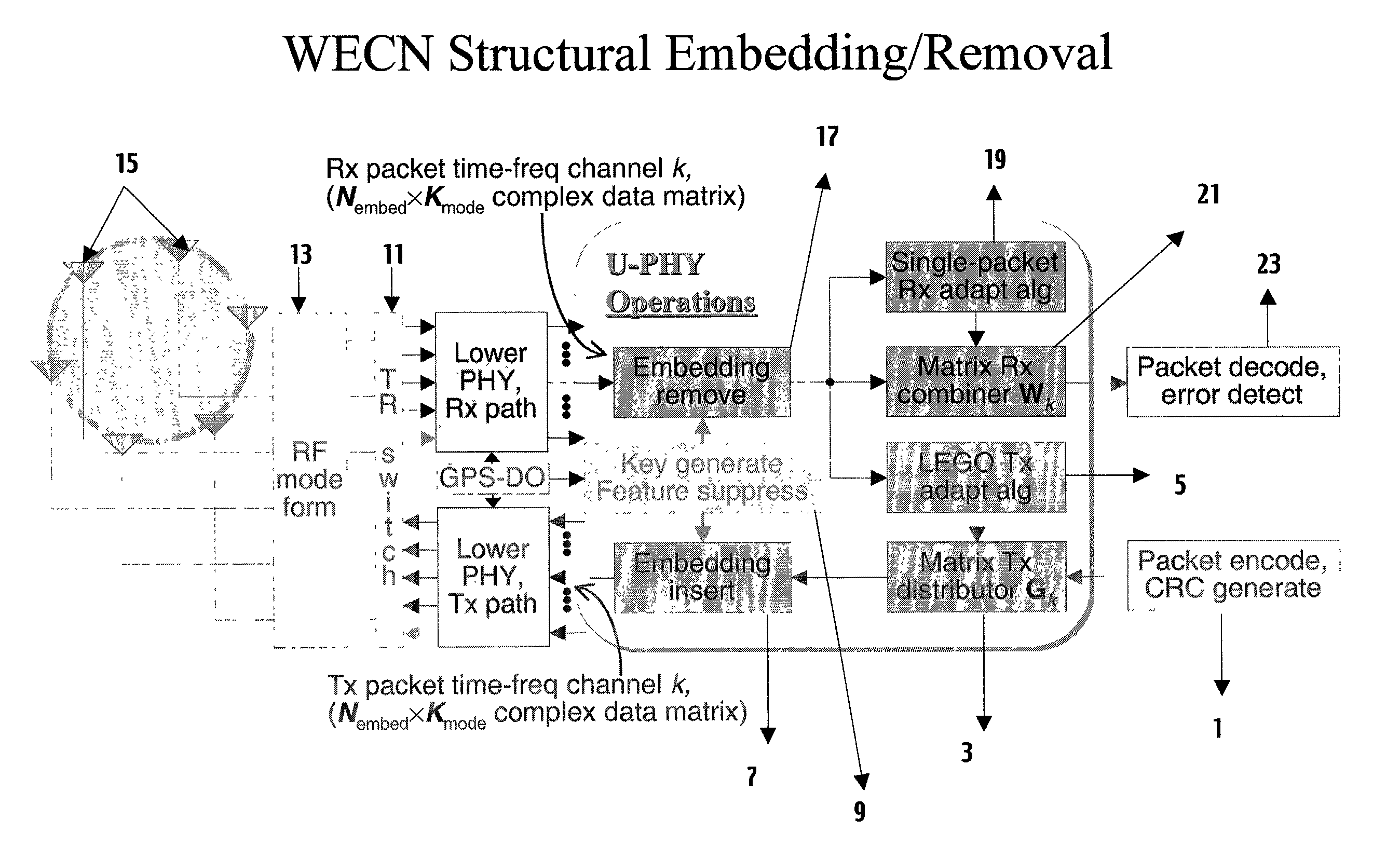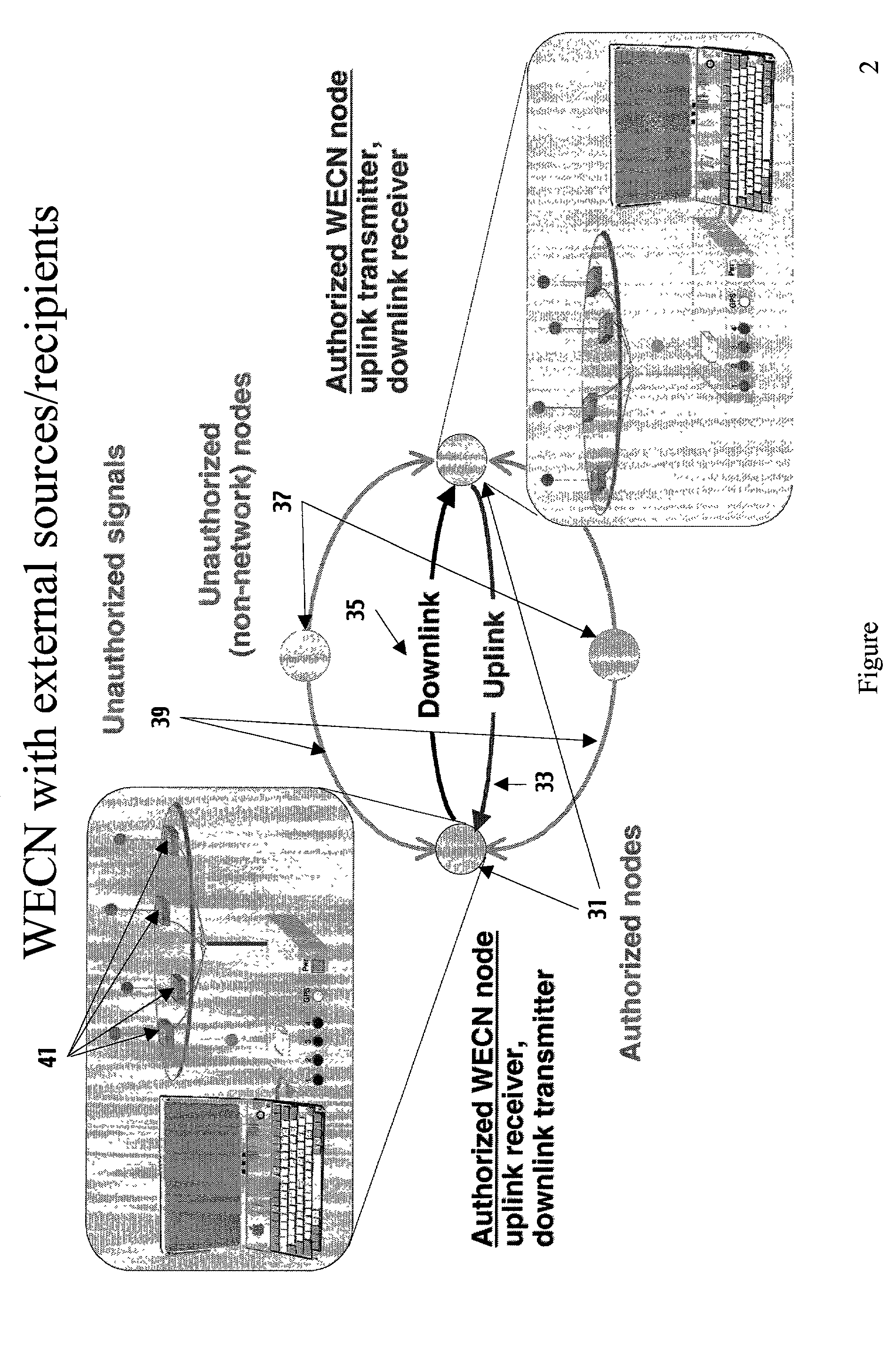Enhancing security and efficiency of wireless communications through structural embedding
a technology of structural embedding and wireless communication, applied in the field of enhancing security and efficiency of wireless communication through, can solve the problems of increasing the complexity of hardware complexity, and thus cost, for each node of the wecn, and the complexity of spread spectrum modulation and spreading code techniques used by the wecn, so as to reduce control and status overhead, improve the reach and discernability of the wecn, and improve the security and efficiency of communications.
- Summary
- Abstract
- Description
- Claims
- Application Information
AI Technical Summary
Benefits of technology
Problems solved by technology
Method used
Image
Examples
Embodiment Construction
[0040]The preferred embodiment to the present invention is implemented as an “upper physical layer applique” (U-PHY) for a wide variety of communication systems and modulation formats usable by any WECN. This permits using a number of embedding approaches, transmit / receive signals processing and adaptation algorithms, and combinations of both preceding, to differentiate and make separable thereby WECNs which otherwise share geographic and bandwidth constraints that would result in interference and indistinguishable signals and noise.
[0041]FIG. 1 displays structural embedding (and its converse operation, structural detection and removal). A digital signal packet to be transmitted, which may already be coded (1), is processed by a matrix transmission distributor (3), which includes as part of its weighting the feedback provided by a Locally-Enabled, Global Optimization transmission adaptation algorithm processor (5). The packet then is combined with a structural embedding (7) which is...
PUM
 Login to View More
Login to View More Abstract
Description
Claims
Application Information
 Login to View More
Login to View More - R&D
- Intellectual Property
- Life Sciences
- Materials
- Tech Scout
- Unparalleled Data Quality
- Higher Quality Content
- 60% Fewer Hallucinations
Browse by: Latest US Patents, China's latest patents, Technical Efficacy Thesaurus, Application Domain, Technology Topic, Popular Technical Reports.
© 2025 PatSnap. All rights reserved.Legal|Privacy policy|Modern Slavery Act Transparency Statement|Sitemap|About US| Contact US: help@patsnap.com



